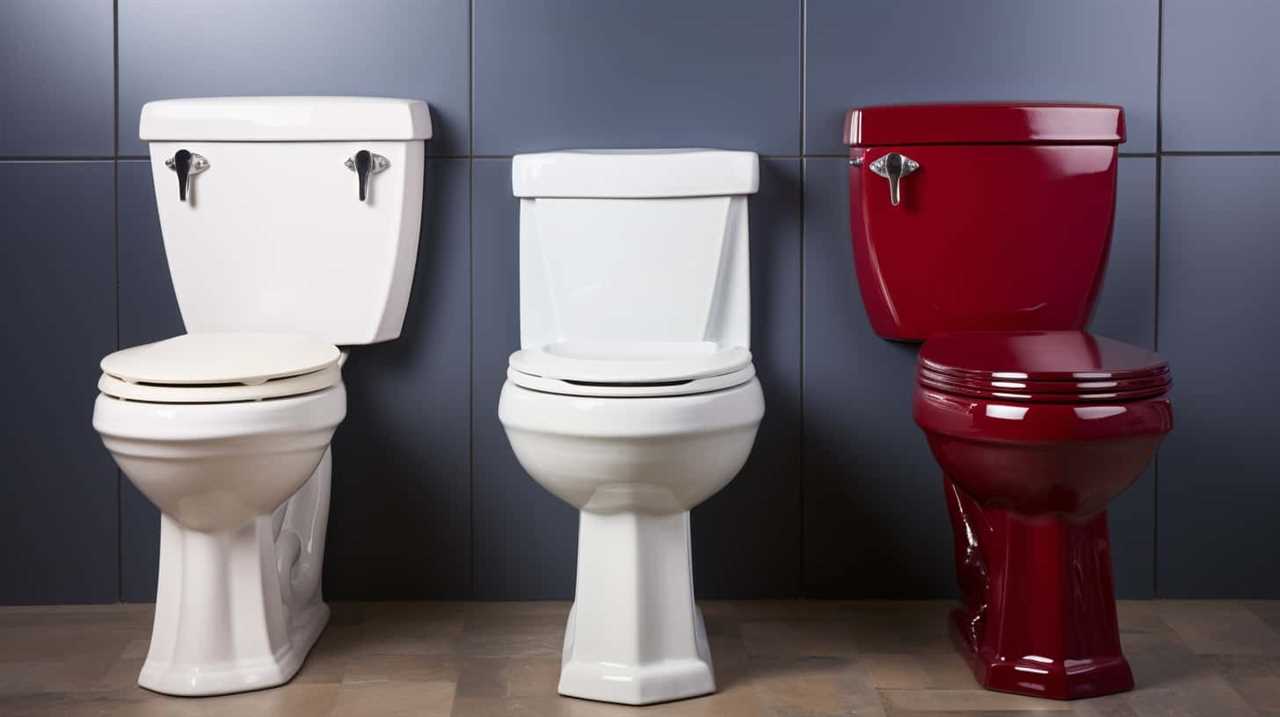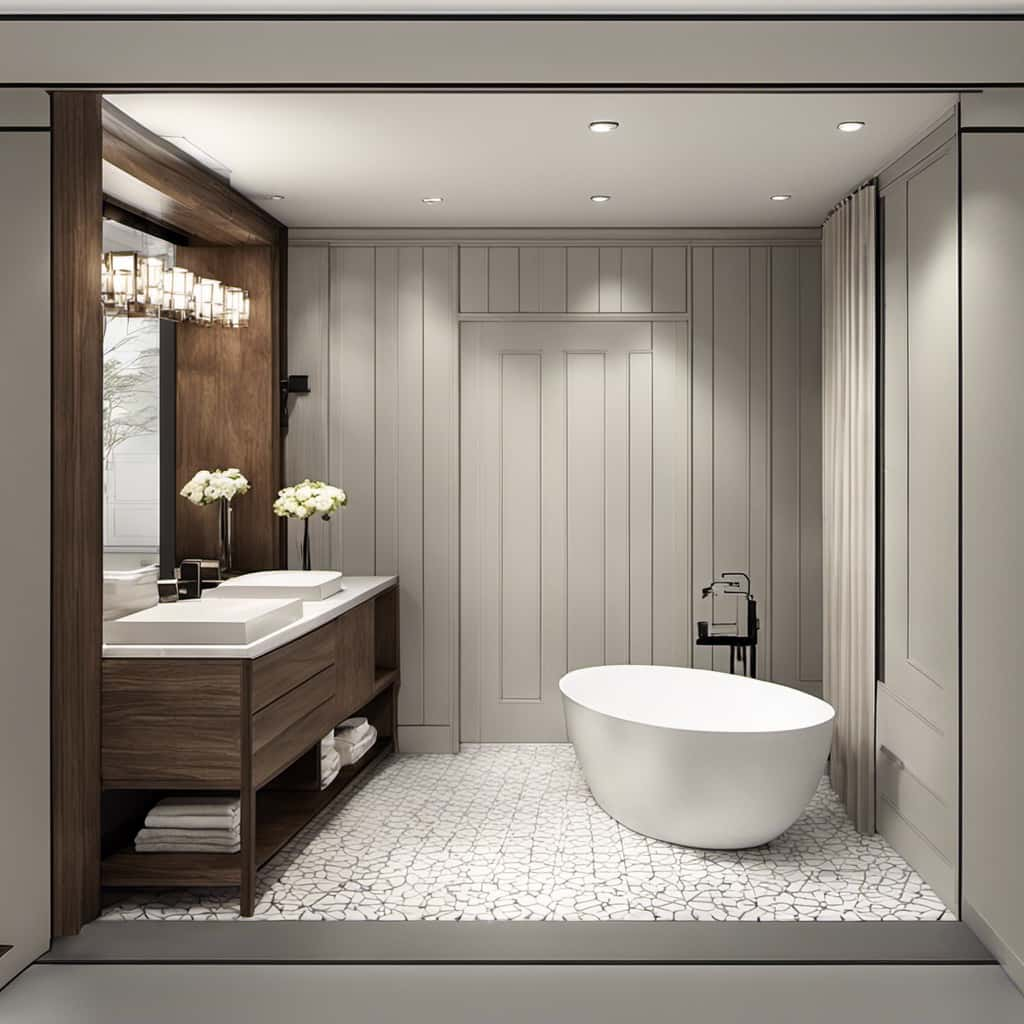Curious about how to make your toilet flush more quietly? We’re here to help.
In this article, we’ll show you various methods to make your toilet flush quieter. From adjusting the water level to installing a soundproofing mat, we’ll provide you with technical, precise, and informative tips.
Whether you’re a DIY enthusiast or seeking professional help, we’ll help you achieve mastery over your toilet’s noise levels.
So, let’s dive in and discover how to hush that flush.

Key Takeaways
- Adjust the water level and replace the fill valve to regulate water pressure and reduce noise during flushing.
- Install a fill valve silencer and check and fix leaks to dampen sound and prevent noise and water waste.
- Consider upgrading to a pressure-assisted toilet for quieter flushing and enhanced flushing efficiency.
- Use DIY soundproofing techniques and add insulation to the toilet tank to reduce noise during flushing and improve overall noise reduction in the bathroom.
Adjust the Water Level
To adjust the water level in our toilet and make the flush quieter, we need to locate the water fill valve. The water fill valve controls the amount of water that enters the toilet tank after each flush. By adjusting the water level, we can regulate the water pressure and reduce the noise during flushing.
To do this, first, turn off the water supply to the toilet by shutting off the valve located behind the toilet. Then, locate the water fill valve, which is usually located on the left-hand side of the toilet tank. Use a screwdriver or your hand to adjust the water level by turning the screw or the adjustment knob on the valve.
Replace the Fill Valve
We can replace the fill valve to further address the noise issue and make our toilet flush quieter. The fill valve is responsible for refilling the toilet tank after each flush. If it’s worn out or not functioning properly, it can create unnecessary noise during the filling process.
Here are some adjustment methods and noise reduction products that can help:

- Adjust the water level: By adjusting the fill valve to the correct water level, you can prevent excessive noise caused by water splashing against the tank walls.
- Install a quiet fill valve: There are fill valves specifically designed to reduce noise during the filling process. These valves have noise reduction features such as rubber padding or water flow regulators.
- Use a fill valve silencer: A fill valve silencer is a noise reduction product that can be attached to the fill valve. It helps dampen the sound produced during the filling process.
- Upgrade to a dual flush system: Dual flush systems allow you to choose between a partial or full flush, reducing the amount of water and noise produced.
Install a Fill Valve Silencer
After replacing the fill valve, one effective way to further reduce the noise of your toilet flush is by installing a fill valve silencer. Fill valve silencers are designed to minimize the noise produced during the filling process, providing a quieter and more enjoyable bathroom experience. These silencers work by absorbing or dampening the vibrations and water flow noises that occur when the toilet tank is refilling.
One of the advantages of using fill valve silencers is their simplicity and ease of installation. They can be easily attached to the fill valve without the need for any special tools or skills. Additionally, fill valve silencers are cost-effective, making them an affordable option for noise reduction.
To illustrate the benefits of fill valve silencers, here is a table showcasing different noise reduction methods:
| Noise Reduction Methods | Advantages of Fill Valve Silencers |
|---|---|
| Fill Valve Silencers | – Easy installation |
| – Cost-effective | |
| – Effective noise reduction | |
| Soundproofing | – Requires more complex installation |
| – Higher cost | |
| – Involves modifying the toilet structure | |
| Quiet Flushing Systems | – May require professional installation |
| – Expensive | |
| – Limited compatibility with existing toilets |
Check for and Fix Any Leaks
First, let’s check for and fix any leaks in our toilet system. Leaks can’t only cause noise but also waste water, leading to higher bills. Here are some steps to help identify and resolve leaks:
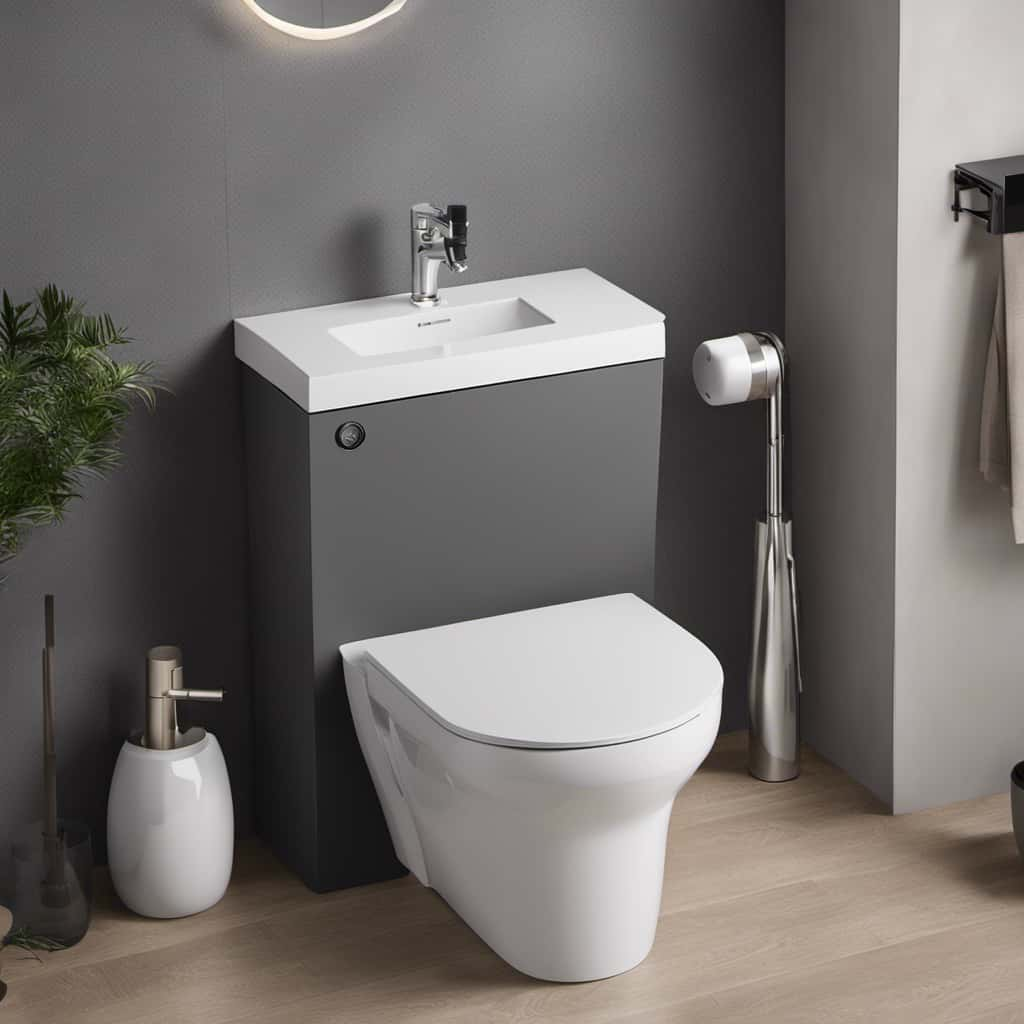
- Check the water supply line: Ensure the supply line is securely connected to the toilet and there are no visible cracks or leaks.
- Inspect the flapper: A faulty flapper can cause continuous water flow. Check for any signs of wear and tear or misalignment and replace if necessary.
- Adjust the water pressure: High water pressure can create noise and leaks. Use a pressure reducing valve to adjust the water pressure to an optimal level.
- Examine the tank bolts and washers: Loose or deteriorated tank bolts and washers can cause leaks. Tighten or replace them if needed.
Upgrade to a Pressure-Assisted Toilet
To further reduce noise and enhance flushing efficiency, we can consider upgrading to a pressure-assisted toilet. Unlike traditional gravity-fed toilets, pressure-assisted toilets use compressed air or water to create a more forceful flush, resulting in a quieter and more effective flushing experience. These toilets are equipped with a pressure tank that stores air or water, which is then released into the bowl when the flush is activated. This powerful force helps to clear waste more efficiently, reducing the need for multiple flushes and minimizing noise. Additionally, pressure-assisted toilets often have a smaller water tank, making them more space-efficient. When considering upgrade options and noise reduction techniques, a pressure-assisted toilet is an excellent choice for those seeking a quieter and more efficient flushing solution.
| Advantages | Considerations |
|---|---|
| More powerful flush | Higher upfront cost |
| Quieter operation | Requires professional installation |
| Space-efficient | Limited design options |
Install a Quieter Flush Valve
When it comes to reducing the noise of a flushing toilet, there are several points to consider.
Firstly, there are noise reduction techniques that can be implemented during the installation process.
Additionally, there are quieter flush valve options available on the market that can significantly reduce noise.
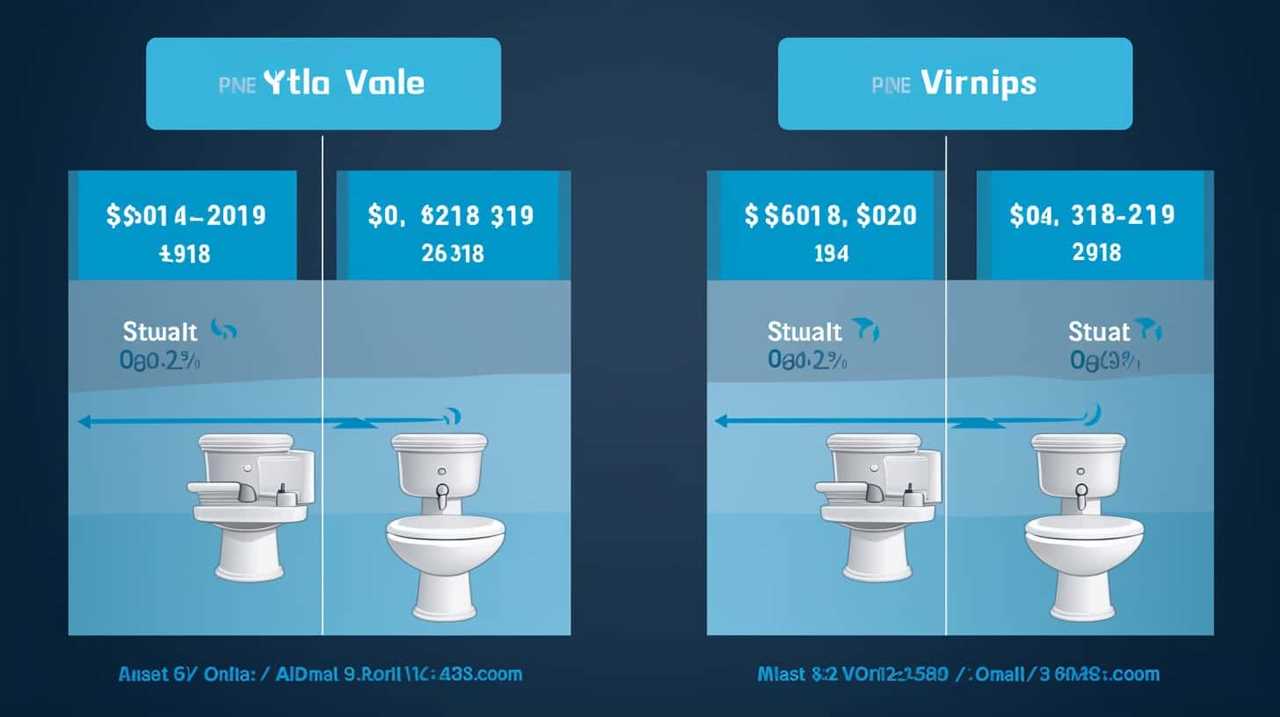
Noise Reduction Techniques
One effective method for reducing the noise of a toilet flush is to install a quieter flush valve. A quieter flush valve can significantly decrease the noise generated during the flushing process, providing a more peaceful and enjoyable bathroom experience.
Here are some benefits of quieter toilets:
- Improved comfort: Quieter toilets create a more relaxing environment, especially during late-night bathroom trips when silence is crucial.
- Enhanced privacy: Reduced noise levels help maintain privacy, preventing others from being disturbed by the sound of a flushing toilet.
- Increased efficiency: Quieter flush valves often come with advanced technology that improves water efficiency, saving you money on your water bills.
- Easy installation: Many quieter flush valves are designed for DIY noise reduction, making them simple to install and requiring minimal tools.
Quieter Valve Options
Let’s explore the options for installing a quieter flush valve to make your toilet flush quieter.
One of the main causes of a noisy flush valve is the fill valve, which controls the water flow during the flushing process. To address this issue, you can consider quieter fill valve options available in the market. These valves are designed to reduce noise by incorporating noise-reducing features such as rubber washers and anti-vibration mechanisms.
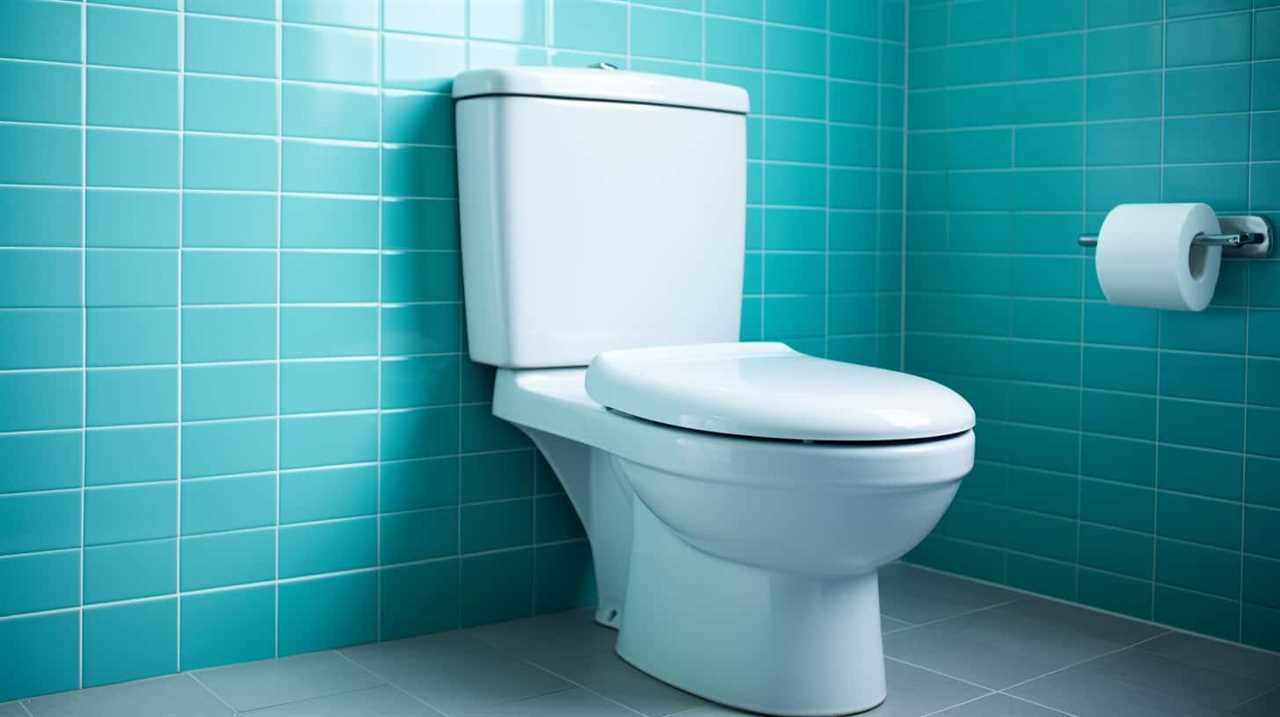
When troubleshooting a noisy flush valve, it’s important to identify the source of the noise. If the noise is coming from the fill valve, replacing it with a quieter option can effectively reduce the noise level during flushing.
DIY Soundproofing Methods
To address the issue of a noisy flush valve, we can explore DIY soundproofing methods by installing a quieter flush valve. Here are some DIY soundproofing techniques that can help in reducing toilet noise:
- Replace the flush valve: Installing a quieter flush valve can significantly reduce the noise produced during flushing. Look for a valve specifically designed for noise reduction.
- Add a noise-reducing fill valve: Consider replacing the fill valve with a noise-reducing model. These valves are designed to minimize the sound of water rushing into the tank.
- Install a toilet tank liner: A toilet tank liner can help reduce noise by creating a barrier between the water and the tank surface. This can dampen the sound of water hitting the tank walls.
- Use soundproofing materials: Apply soundproofing materials, such as foam or rubber padding, to the inside of the tank and the surrounding walls to absorb and reduce sound waves.
By implementing these DIY soundproofing techniques, you can effectively reduce the noise produced by your toilet flush.
Now, let’s explore another method to further reduce toilet noise by adding insulation to the toilet tank.

Add Insulation to the Toilet Tank
To reduce the noise from a toilet flush, we can start by adding insulation to the toilet tank. Installing insulation in the tank helps to absorb the sound produced during flushing, resulting in a quieter operation.
One effective method is to use a noise-canceling fill valve, which is specifically designed to minimize noise. This type of fill valve is equipped with a built-in mechanism that reduces the sound caused by the water flowing into the tank.
Additionally, adding insulation to the tank walls and bottom can further reduce noise transmission. There are various types of insulation materials available, such as foam or rubber liners, which can be easily installed inside the tank.
Consider Using a Dual-Flush System
Let’s now explore the option of using a dual-flush system to make your toilet flush quieter.

Dual-flush toilets are designed with two different flushing options, allowing you to choose between a lower water volume for liquid waste and a higher volume for solid waste. This not only reduces noise during the flush but also promotes water conservation.
We’ll discuss the different noise-reducing toilet options available, highlight the benefits of dual-flush toilets, and provide installation and maintenance tips to help you make an informed decision.
Noise-Reducing Toilet Options
One option we can consider for reducing noise when flushing a toilet is to use a dual-flush system. This system provides two flushing options: a half flush for liquid waste and a full flush for solid waste.
Here are some noise-reducing toilet options to consider:

- Noise-reducing toilet seat options: Some toilet seats are designed with noise-absorbing materials, such as rubber or foam, to minimize the sound when the toilet is flushed.
- Insulated tanks: Insulating the toilet tank can help reduce noise by dampening the sound vibrations produced during flushing.
- Quiet fill valves: Upgrading to a quiet fill valve can significantly reduce the noise caused by water refilling the toilet tank after flushing.
- Soundproofing techniques: Installing soundproof panels or adding soundproofing materials to the walls surrounding the toilet can further reduce noise.
Benefits of Dual-Flush
Using a dual-flush system offers us the benefit of conserving water while still maintaining a quieter flushing experience. Dual flush toilets are designed with two flushing options: a full flush for solid waste and a half flush for liquid waste. By choosing the appropriate flush option, we can significantly reduce water usage compared to traditional single-flush toilets.
This conservation of water not only helps the environment but also lowers water bills. Additionally, dual-flush systems use innovative flushing mechanisms that result in a quieter flushing operation. The reduced noise level is achieved through improved engineering and the incorporation of noise-reducing components.
With the advantages of dual flush systems, we can have a more sustainable and peaceful bathroom experience.
Installation and Maintenance Tips
We recommend considering the installation and maintenance of a dual-flush system for a quieter toilet flush. A dual-flush system allows you to choose between a partial flush for liquid waste and a full flush for solid waste, reducing the noise and water consumption.

Here are some installation and maintenance tips to ensure optimal performance:
- Install a dual-flush system: Upgrade your toilet with a dual-flush conversion kit or replace your existing toilet with a dual-flush model.
- Adjust the water level: Ensure the water level in the tank is set correctly to avoid excessive noise during flushing.
- Regularly clean the toilet flapper: Over time, the toilet flapper can accumulate debris, hindering proper flushing. Clean or replace the flapper as needed.
- Troubleshoot common flushing issues: If your dual-flush system experiences problems like weak flushes or constant running, consult the manufacturer’s troubleshooting guide or seek professional assistance.
Following these tips will help you achieve a quieter toilet flush while maintaining optimal performance.
Use a Soft-Close Toilet Seat
To reduce the noise of a toilet flush, consider installing a soft-close toilet seat. Not only does it provide a quieter flushing experience, but it also offers several other benefits. A soft-close toilet seat is designed with a mechanism that allows it to close slowly and gently, preventing slamming noises. This is especially useful in households with light sleepers or small children who may be startled by a loud noise. Additionally, the soft-close feature extends the lifespan of the toilet seat by reducing wear and tear caused by abrupt movements.
When installing a soft-close toilet seat, it’s important to follow a few tips to ensure proper installation. First, make sure to carefully read and follow the manufacturer’s instructions. This will ensure that the seat is installed correctly and securely. It’s also important to regularly check and tighten the seat’s bolts to prevent any wobbling or loosening over time. By taking these installation tips into consideration, you can enjoy the benefits of a quieter toilet flush and a longer-lasting toilet seat.

To further minimize toilet flush noise, another option is to install a soundproofing mat under the toilet.
Install a Soundproofing Mat Under the Toilet
Let’s explore the different options available for a noise-reducing mat that can be installed under the toilet to minimize flushing sounds.
We’ll discuss the effectiveness of soundproofing mats in reducing noise levels and provide tips and tricks for their installation.
Noise-Reducing Mat Options
One effective option for reducing noise when flushing a toilet is to install a soundproofing mat underneath it. Soundproofing mats are specifically designed to absorb and dampen sound vibrations, resulting in a quieter toilet flush.

Here are four noise-reducing mat options to consider:
- Rubber mat: Made from durable rubber, these mats are effective at absorbing sound vibrations and can be easily installed underneath the toilet.
- Cork mat: Cork is a natural soundproofing material that offers excellent noise reduction properties. Cork mats are eco-friendly and provide a cushioning effect that helps minimize flushing noise.
- Acoustic foam mat: Acoustic foam is designed to absorb sound waves and reduce echo. Installing an acoustic foam mat underneath the toilet can significantly reduce noise during flushing.
- Mass-loaded vinyl mat: This heavy-duty mat is specifically designed for soundproofing applications. It effectively blocks noise transmission and can be installed underneath the toilet to reduce flushing noise.
Effectiveness of Soundproofing
We found that installing a soundproofing mat under the toilet greatly reduces flushing noise.
Soundproofing materials are specifically designed to minimize the transmission of sound waves, making them ideal for reducing noise in various applications, including toilets.
These materials are typically made from dense and resilient materials such as rubber or foam, which effectively absorb and dampen sound vibrations.

By placing a soundproofing mat under the toilet, the mat acts as a barrier, preventing noise from traveling through the floor and walls.
This technique is one of the most effective noise reduction techniques for toilets, as it directly targets the source of the noise.
Additionally, soundproofing mats are relatively easy to install and can be a cost-effective solution for achieving a quieter flushing experience.
Installation Tips and Tricks
To achieve optimal noise reduction, the installation of a soundproofing mat under the toilet is essential. This simple yet effective technique can significantly reduce the noise produced during flushing.

Here are some installation techniques and common mistakes to avoid:
- Proper Positioning: Ensure that the soundproofing mat covers the entire area underneath the toilet. This will prevent any gaps that could allow sound to escape.
- Secure Attachment: Use adhesive or double-sided tape to secure the soundproofing mat to the floor. This will prevent it from shifting or coming loose over time.
- Seal Cracks and Gaps: Before installing the soundproofing mat, inspect the area around the toilet for any cracks or gaps. Seal them with caulk or foam to further reduce noise transmission.
- Choose the Right Mat: Select a soundproofing mat specifically designed for toilets. These mats are typically made of dense materials that effectively absorb and block noise.
Replace Old or Worn-Out Toilet Parts
To achieve a quieter flush, it’s essential to replace any old or worn-out toilet parts. One common cause of a noisy flush is a faulty fill valve or flapper. The fill valve controls the water level in the tank, while the flapper releases the water into the bowl during flushing. Over time, these parts can wear out, leading to leaks and noisy flushes. By replacing them, you can restore the proper functioning of your toilet and reduce noise.
Additionally, adjusting the water pressure can also help in achieving a quieter flush. High water pressure can cause turbulence and noise during flushing. Cleaning the toilet jets regularly is another important step to maintain a quieter flush. Clogged jets can disrupt the water flow, resulting in a noisier flush. Therefore, it’s crucial to keep these parts in good condition to ensure a quieter and more efficient flush.
Consider Installing a Water Hammer Arrestor
To further address the issue of a noisy flush, let’s delve into the topic of installing a water hammer arrestor.

A water hammer arrestor is a device that helps prevent the loud banging noise often heard when a toilet flushes. Here are some key benefits of installing a water hammer arrestor:
- Water hammer prevention: A water hammer arrestor helps prevent the occurrence of water hammer, which is the sudden increase in water pressure that causes pipes to vibrate and create noise.
- Reduced noise: By installing a water hammer arrestor, you can significantly reduce the noise produced during the flushing process, providing a quieter and more peaceful bathroom experience.
- Preserves plumbing system: Water hammer can cause damage to the plumbing system over time. Installing a water hammer arrestor helps protect your pipes and fixtures from potential harm.
- Improved efficiency: In addition to reducing noise, a water hammer arrestor can improve the overall efficiency of your plumbing system by regulating water pressure and preventing unnecessary strain on the pipes.
Seek Professional Help if Needed
If professional assistance is necessary, we can contact a licensed plumber to help address the issue of a noisy toilet flush. Seeking professional advice is important when troubleshooting techniques fail to resolve the problem. A licensed plumber has the expertise and knowledge to diagnose and fix the underlying issue causing the loud flush. They can also provide guidance on the best course of action to make the toilet flush quieter.
Here is a table that summarizes the benefits of seeking professional help:
| Benefits of Seeking Professional Help |
|---|
| Expertise and knowledge |
| Diagnose and fix underlying issues |
| Guidance on resolving the problem |
| Ensure proper installation and repairs |
| Save time and effort |
Conclusion
In conclusion, by following these steps, you can effectively reduce the noise produced by your toilet flush.

Whether it’s adjusting the water level, replacing old parts, or considering upgrades, there are various options available to quieten your toilet.
Remember, a peaceful bathroom experience is attainable with the right approach. So, take action today and enjoy a quieter flush in your home.



